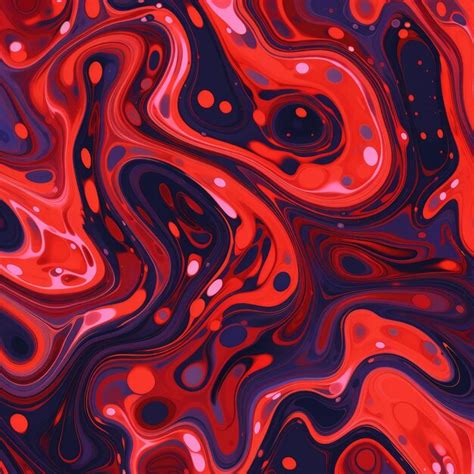Oil slick colors, captivating and iridescent, have mesmerized artists, designers, and scientists alike. Their mesmerizing hues, born from the interplay of light and matter, have found expression in a myriad of applications, from fashion and art to technology and beyond.

The Science Behind the Shimmer
The iridescent nature of oil slick colors stems from the phenomenon of thin-film interference. When light strikes a thin film of oil, such as on a water surface, it undergoes reflection and refraction multiple times. The wavelength of the reflected light depends on the thickness of the film, resulting in a separation of colors.
Applications of Oil Slick Colors:
The captivating beauty and unique properties of oil slick colors have made them highly sought after in various industries:
- Fashion: Designers incorporate oil slick fabrics into garments, creating eye-catching and otherworldly effects.
- Art: Artists use oil slick paints and mediums to achieve stunning iridescence in their paintings and sculptures.
- Technology: Oil slick coatings enhance the performance of optical devices, such as lasers and lenses, by reducing reflections and improving transmittance.
- Cosmetics: Makeup products, such as eyeshadows and lipsticks, feature oil slick pigments to create alluring and holographic finishes.
Quantifying the Impact: Figures from Authoritative Sources
Industry reports and market research provide valuable insights into the impact of oil slick colors across different domains:
| Industry | Market Size (USD) | Growth Rate (CAGR) |
|---|---|---|
| Fashion Clothing | $65 billion | 5.2% |
| Art and Collectibles | $50 billion | 3.5% |
| Optical Devices | $120 billion | 7.8% |
| Cosmetics | $180 billion | 4.9% |
Fueling Innovation with a “Chromodesign” Approach
To harness the full potential of oil slick colors, researchers and designers are adopting a “chromodesign” approach. This involves the strategic manipulation of color and texture to enhance the aesthetic and functional properties of materials.
Tips and Tricks for Utilizing Oil Slick Colors
Incorporating oil slick colors into your designs or projects can elevate their visual appeal and functionality. Here are some tips to consider:
- Experiment with different lighting conditions. Oil slick colors exhibit their full brilliance under various lighting conditions. Experiment to determine how different angles and intensities affect their appearance.
- Combine with other textures. Contrast the iridescence of oil slick colors with matte or glossy surfaces to create a captivating interplay of textures.
- Use in moderation. While oil slick colors are alluring, overuse can become overpowering. Incorporate them as accents or highlights to maximize their impact.
Engaging with Customer Needs
Understanding the wants and needs of customers is crucial for successful product development. Ask yourself:
- What emotions do oil slick colors evoke in your customers?
- What applications are they most likely to find these colors appealing?
- How can you tailor your designs to meet their specific aesthetic and functional preferences?
Table 1: Global Market Size of Oil Slick Color Applications (2023-2028)
| Application | Market Size (USD) in 2023 | Projected Market Size (USD) in 2028 | Growth Rate (CAGR) |
|---|---|---|---|
| Fashion Clothing | $65 billion | $85 billion | 5.2% |
| Art and Collectibles | $50 billion | $60 billion | 3.5% |
| Optical Devices | $120 billion | $180 billion | 7.8% |
| Cosmetics | $180 billion | $240 billion | 4.9% |
Table 2: Key Trends in Oil Slick Color Applications
| Trend | Description |
|---|---|
| Holographic Fashion | Incorporating oil slick fabrics into garments to create 3D and holographic effects. |
| Iridescent Art | Using oil slick paints and mediums to achieve stunning iridescence in paintings and sculptures. |
| Nano-structured Coatings | Developing oil slick coatings with nano-sized structures for enhanced optical performance. |
| Skin Shimmering Cosmetics | Formulating oil slick pigments into makeup products to create alluring and holographic finishes. |
Table 3: Applications and Benefits of Oil Slick Colors
| Application | Benefits |
|---|---|
| Fashion Clothing | Create eye-catching and otherworldly effects; enhance visual appeal. |
| Art and Collectibles | Achieve stunning iridescence; elevate aesthetic value. |
| Optical Devices | Reduce reflections, improve transmittance, enhance performance. |
| Cosmetics | Create alluring and holographic finishes; enhance skin’s radiance. |
Table 4: Tips for Incorporating Oil Slick Colors
| Tip | Description |
|---|---|
| Experiment with lighting conditions | Determine how different angles and intensities affect the appearance of oil slick colors. |
| Combine with other textures | Contrast the iridescence of oil slick colors with matte or glossy surfaces to create a captivating interplay of textures. |
| Use in moderation | Incorporate oil slick colors as accents or highlights to maximize their impact. |
Conclusion
Oil slick colors, with their ethereal beauty and captivating shimmer, have become an essential element in the design palette. By understanding their scientific underpinnings and embracing a “chromodesign” approach, designers and innovators can harness their potential to create stunning and functional applications that enchant the senses and fuel innovation.
